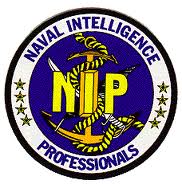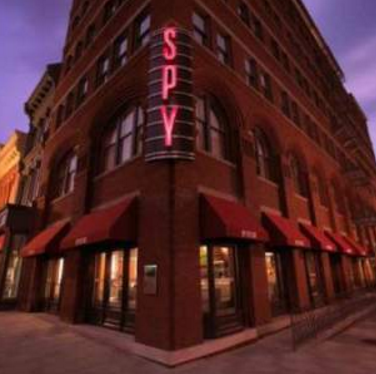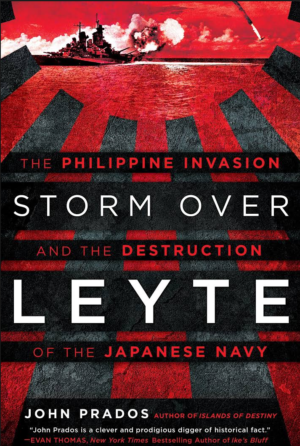Storm Over Leyte with John Prados

An evening of naval history and the role of intelligence in battle at the International Spy Museum
 The International Spy Museum (800 F St NW, Washington, DC 20004) is a national treasure of spookery, tradecraft and strange tales. It is a must-see attraction when visiting Your Nation’s Capital, and well worth the trip downtown. Numerous watering holes are located in the neighborhood if you need to fortify yourself before assuming your clandestine identity and touring the exhibits that challenge your ability to maintain a cover identity in the secret world.
The International Spy Museum (800 F St NW, Washington, DC 20004) is a national treasure of spookery, tradecraft and strange tales. It is a must-see attraction when visiting Your Nation’s Capital, and well worth the trip downtown. Numerous watering holes are located in the neighborhood if you need to fortify yourself before assuming your clandestine identity and touring the exhibits that challenge your ability to maintain a cover identity in the secret world.
The Spy Museum is also a wonderful educational resource, and this week hosted a fascinating talk in partnership with the Naval Intelligence Professionals (NIP). The museum’s leadership were grateful for NIP’s National Capital Chapter’s efforts to co-sponsor a presentation by author and historian John Prados on the epic WWII Battle of Leyte Gulf. Turnout was brisk for the ninety-minute presentation.
At the presentation in the the evening of 19 September, 2016, John talked at length about the contributions made by Naval Intelligence, namely ‘JICPOA’ (Joint Intelligence Center Pacific Ocean Area) and ‘FRUPAC,’ (Fleet Radio Unit Pacific) to the success of the USN forces in that battle.NIP Founder RADM Donald “Mac” Showers was a participant in both organizations. The ISM Historian, Dr. Vince Houghton, spoke first, thanking NIP for co-sponsoring the event, then introduced author John Prados (who he has written at least 20 historical books).
John then spoke for just over an hour, then held a Q&A session for another half hour, describing numerous little-known events that provide the context for the greatest maritime struggle in history. His account of President Franklin Roosevelt’s 30-day trip to and from Pearl Harbor the month before the battle was riveting. FDR met with ADM Chester Nimitz and General Douglas MacArthur at Pearl Harbor to set the final strategy for the recapture of the Philippines. He also paid special tribute to the intel contributions made by FRUPAC and JICPOA, and the stroke of luck that allowed the USN to steal the Japanese “Z Plan,” which provided the USN commanders with the Japanese battle plan in advance of the crucial engagements.
 John Prados is an author and analyst of national security based in Washington, DC. He is the author of more than twenty books and many articles on topics of current importance, presidential studies, international security; and diplomatic, intelligence, or military history.
John Prados is an author and analyst of national security based in Washington, DC. He is the author of more than twenty books and many articles on topics of current importance, presidential studies, international security; and diplomatic, intelligence, or military history.
His current book is Storm Over Leyte: The Philippine Invasion and the Destruction of the Japanese Navy (Penguin Random House). His current longform ebook is A Streetcar Named Pleiku: Vietnam 1965, A Turning Point (Nowandthenreader.com). His current e-book is Operation Vulture: America’s Dien Bien Phu. Recently appearing in paperback are The US Special Forces: What Everyone Needs to Know (Oxford University Press), The Family Jewels: The CIA, Secrecy, and Presidential Power (University of Texas Press). Classic paperback editions include Islands of Destiny: The Solomons Campaign and the Eclipse of the Rising Sun (NAL/Caliber); and Vietnam: The History of an Unwinnable War, 1945-1975 (University of Kansas Press), winner of the Henry Adams Prize in American History. Other longforms include “Rethinking National Security” (Nowandthenreader.com). Other works include Normandy Crucible: The Decisive Battle That Shaped World War II in Europe (NAL/Caliber), In Country: Remembering Vietnam (Rowman & Littlefield), and How the Cold War Ended: Debating and Doing History (Potomac/University of Nebraska). In addition, Prados is author of titles on national security, the American presidency, and other subjects including Vietnam, the Soviet Union, and World War II. He is also a noted designer of board games on military strategy, intelligence, and diplomacy.
John’s narrative described the sprawling nature of the tactical picture as the Allies prepared for the invasion of the Philippine island of Leyte. In the Japanese Order of Battle, every available warship, submarine, and airplane was placed on alert while Admiral Kurita Takeo stalked Admiral William F. Halsey’s unwitting American armada. It was the beginning of the epic Battle of Leyte Gulf—the greatest naval battle in history.
 John’s newest book, Storm Over Leyte, provides an unprecedented look at both sides of this titanic naval clash. Drawing upon a wealth of untapped sources for the book, including US and Japanese military records, diaries, declassified intelligence reports, and postwar interrogation transcripts— his book offers up a masterful narrative of naval conflict on a gigantic scale.
John’s newest book, Storm Over Leyte, provides an unprecedented look at both sides of this titanic naval clash. Drawing upon a wealth of untapped sources for the book, including US and Japanese military records, diaries, declassified intelligence reports, and postwar interrogation transcripts— his book offers up a masterful narrative of naval conflict on a gigantic scale.
With access to the naval intelligence reports that influenced key strategic decisions on both sides, attendees found out why Prados believes that despite the Americans’ overwhelming superiority in firepower and supplies, the Japanese found a new weapon and achieved part of their goal in forestalling the inevitable.
NIP stalwart and lecture attendee Terry Wilton noted: “As the son of a WWII veteran and American history professor, I thought I knew all about the Battle of Leyte Gulf, but John Prados told us of numerous little-known events leading up to the battle and how the Pearl Harbor intel offices contributed.”
I could almost hear our pal Mac Showers chuckle as he recounted the hunt for IJN Yamato, the super-battleship that was flung in a last-dtich effort against the Allied armada. Mac was there, and he made it as vivid as if it had happened yesterday. Since his passing, we will have to rely on great historians like John Prados to keep the memories alive. In light of the assertive actions of the PRC in fortifying the reefs and shoals of the South China Sea, the lessons are particularly (and troublingly) relevant today.
Copyright 2016 Vic Socotra
www,vicsocotra.com
